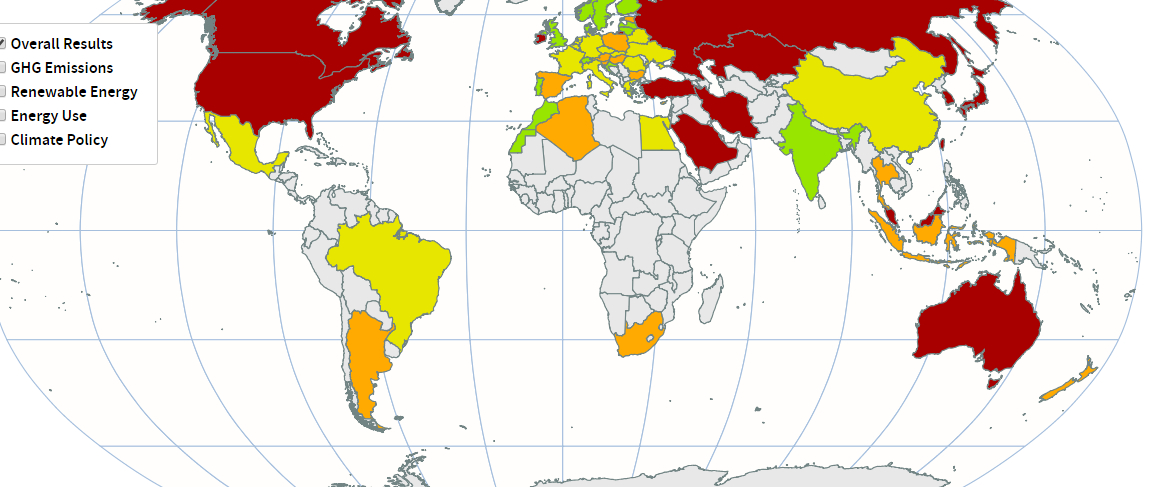
Almost half of G20 nations ranked as worst climate performers
The top three spots in GermanWatch’s annual global climate index were blank this year, with no countries meeting its emissions target.
Sweden, the highest ranking country, came in fourth followed by Morocco.
Climate Change Performance Index (CCPI) 2019 jointly prepared by Germanwatch, Climate Action Network (CAN) and NewClimate Institute was released on Monday at the ongoing global climate change summit, COP24, at Katowice, Poland.
Among the medium-performing countries, China ranked 33, moving up from last year’s 41. Data reveals China reduced its emissions from 2014 to 2016, but emissions started to increase again recently.
“The overall high rating in the climate policy category reflects the government’s progress on regulating industrial emissions, building emissions and a successful renewable energy support scheme,” researchers maintained.
Neighboring India’s massive adoption of renewable energy improved its rank to 11. A low level of per capita emissions and a relatively ambitious mitigation target for 2030 is also helping the country meet a set of climate goals.
Shockingly, the G20 nations that account for nearly 85 percent of the world’s nominal GDP were found to be major climate defaulters. Almost half of them were in the low performer category.
The U.S. and Saudi Arabia were at the bottom of the list, ranking 59 and 60 respectively. Iran came in at 58th.
Among the G20 countries, a majority of them placed at the bottom of the index including Japan (49), Turkey (50), Russia (52), Canada (54), Australia (55), and South Korea (57).
Germany slipped again from No. 22 to 27 to find a place in the middle of medium-performing countries; the country’s reliance on coal for power generation is facing severe criticism.

Most of the developed nations have failed to meet their emission targets, CCPI findings reveal. /Germanwatch Graphics
Governments had pledged to drastically reduce emissions to meet the Paris Agreement to keep the global temperature rise within two degrees Celsius.
“Before Paris, the world was heading to four to five degrees Celsius of global warming. Now we are still on a path to more than three degrees Celsius, still a catastrophic perspective,” Niklas Höhne from NewClimate Institute said.
“The costs of electricity from wind and solar have dropped by roughly a third since then, so all countries can increase ambition and pace,” he added.
The 56 countries studied while preparing the index, produce more than 90 percent of global greenhouse gas emissions. Amid the gloomy scenario, nearly half of the 60 countries are taking some action to meet the climate goal.
“There are bright spots in all categories, but no country performs well in all categories. If all countries would follow the leaders, we would come a long way towards a well below two degrees Celsius pathway,” Höhne added.
In recent years, national governments are showing disinterest in lowering emissions. But local governments are enthusiastically supporting green initiatives.
Researchers highlighted the case of the U.S., where national climate policy has been rated very low, but several states and cities have taken strong climate action.
It’s happening “because of the Democrats promise to push climate policy with their new majority in the House of Representatives,” the CCPI statement said.
















